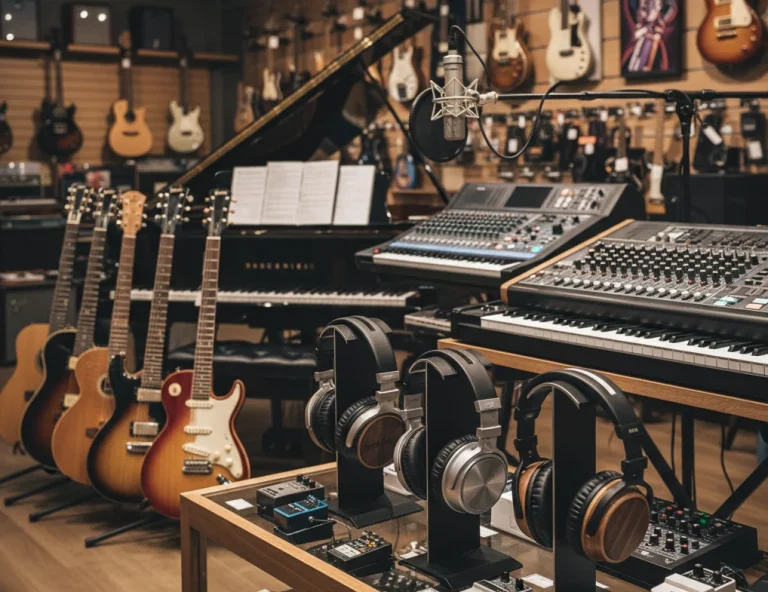All Topics
- Alchemizing Music Concepts for Students
- Artist Spotlight
- artium gift card
- Artium Maestros
- Artium News
- buying guide
- Carnatic Music
- Devotional Music
- Editorials by Ananth Vaidyanathan
- Film Music
- Guitar
- Hindustani Classical Music
- Indian Classical Music
- Indian Folk Music
- Insights
- Instruments
- Karaoke Singing
- Keyboard
- Kids Music
- maestros
- Music Education
- Music for Kids
- Music Industry
- Music Instruments
- Music Legends
- Music Theory
- Music Therapy
- Piano
- piano guide
- Success Stories
- Tamil Film Music
- Telugu Film Music
- Time Theory
- Tools
- Uncategorized
- Vocal Singing
- Vocals
- western classical music
- western music
- Western vocal music
8 Best Ways to Learn Guitar Lessons for Beginners
8 Best Ways to Learn Guitar Lessons for Beginners

Table of Contents
The guitar is an incredible instrument that can bring joy, passion, and creativity into your life. From strumming your favourite songs to jamming with friends or even composing your own music, playing the guitar opens up a window of possibilities for you to have fun and be creative at the same time. As a beginner, it’s essential to approach your guitar lessons with the right mindset to build a solid foundation. This blog will shed light on some of the best tips you can adapt and learn to play guitar, setting yourself up for success. So, grab your guitars and get ready to rock!
But before that…
If you’re really excited to start your journey in music, start with a free trial lesson today!
8 Best Ways To Learn Guitar Lessons For Beginners
- Find The Perfect Guitar For You
When starting your guitar journey, it is crucial to find the right instrument. As there are a number of options available in the market, each with its unique sound and style, choosing the perfect one can be a bit overwhelming. Hence, you should take your time to explore different types of guitars, such as acoustic, electric, or classical, and select the one that blends with your musical aspirations.
You must visit the local store and try different guitars. Consider factors such as the guitar’s size, weight, and playability, ensuring that it fits well in your hands. If you are confused, seek advice from experienced guitarists or music store professionals who can guide you towards the instrument that best suits your needs. Your guitar is much like a true companion, which should feel comfortable and inspire you to play.
- Understand The Basic Elements
Before you start strumming, it is essential to get acquainted with the basic elements of a guitar. Come let’s demystify this magical instrument:
a) The Neck: It is the long, slender part that holds the frets, strings, and tuning pegs. Becoming familiar with the frets and their corresponding notes is integral, as they are the building blocks of chords and melodies.
b) Strings: If you are planning to start playing a guitar, you should know that there are two types of strings – steel and nylon. Learn about the different strings and see which kind of string sounds appealing to you.
- Tune Your Guitar
A properly tuned guitar is essential for producing beautiful and pleasant melodies. It assures your guitar sounds harmonious, makes learning songs easier and trains your ear to recognize the correct pitch. Here are some simple ways to get your guitar in tune:
a) Get a Tuner: Investing in an electronic tuner or using a tuning app on your smartphone can help you to ensure accurate tuning. These tools provide visual or audio feedback to help you adjust the pitch of each string accurately.
b) Standard Tuning: Tune your guitar to standard tuning, where the strings are tuned to E-A-D-G-B-E from low to high. It is the most common tuning for beginners and will align your playing with most learning resources.
- Rhythmic Exercises
As a guitarist, it is important to opt for basic rhythmic exercises because rhythm is an essential part of playing guitar. Without good rhythm, a guitar player will sound sloppy and unprofessional. For this, you can work with a metronome, use muting techniques, and build speed. Once you have mastered the basics, you can start putting it all together. Start by playing simple songs and gradually work your way up to more complex songs. The three basic areas of rhythmic practice for guitarists are strumming, picking and chromatic exercise.
- Strumming Exercises: It is one of the fundamental techniques for guitarists, which involves playing the chord with a rhythmic pattern. By mastering strumming patterns and rhythms, you can enhance your potential to accompany songs and play various musical genres. Downstroke and Upstroke alternation and practising different rhythmic patterns can help you greatly to improve your strumming.
- Picking Exercises: Picking in guitar refers to the number of hand and finger techniques used by the guitarist to play different strings. You can increase your precision, speed, and agility when playing individual notes or melodies by practising exercises such as alternate picking, tremolo picking and string skipping.
- Chromatic Exercises: Chromatic scale is a symmetrical scale consisting of twelve musical notes where each of the notes is a semi-tone apart. Chromatic exercises for the left hand are invaluable for developing finger strength, dexterity and coordination. These exercises involve playing consecutive notes in a chromatic sequence. Finger independence, sliding and hammer on and poll off are some of the chromatic exercises.
5. Get Comfortable Playing Major & Minor Chords
Now that you’ve found your guitar learned the basics, and tuned it to perfection, it’s time to play some chords. They are the backbone of many songs, and learning them will help you strum along with your favourite tunes. Start with major and minor chords as it forms the foundation of countless melodies.
a) Major Chords:
Begin with the basic open chords such as C, D, E, G, and A. Practice transitioning between these chords smoothly, as it will improve your overall playing ability. These chords are used to create a bright and uplifting sound.
b) Minor Chords:
Once you’re comfortable with major chords, explore minor chords like Am, Dm, Em, and Bm. These add depth and emotion to your music, expanding your musical repertoire. Minor chords evoke a more melancholic and introspective sound.
- Create A Practice Schedule
Consistency is a key aspect when it comes to learning guitar, and even more important to establish a practice routine. It will help you stay on track and make steady progress. Allocate dedicated time each day or week to hone your skills. Treat your practice sessions as a sacred ritual, free from distractions. Practice with intent, paying attention to your posture, hand placement, and strumming technique.
Break down your practice into different parts, such as warm-up exercises, scales, chord progressions, and learning songs. Mix things up to keep your practice sessions engaging and enjoyable. With time, you will witness significant improvements in your playing ability, leading to a sense of accomplishment and motivation.
- Set Achievable Goals
Learning the guitar is a journey and like any adventure, it’s essential to have clear goals to guide you. Setting goals acts as a compass which keeps you motivated and helps you to measure your growth. As a beginner, it’s important to set realistic and achievable goals. Start small, like learning a few basic chords or mastering a simple song, and gradually challenge yourself with more complex techniques or genres.
Celebrate each milestone along the way, as these small victories fuel your motivation and make the learning process enjoyable. Additionally, consider sharing your goals with a fellow guitarist or joining a supportive community, as they can provide valuable encouragement and accountability throughout your learning journey.
- Sign Up For a Digital Course
You can enhance your learning experience by enrolling for guitar classes online, as it is one of the best ways to learn guitar. It has provided a great opportunity for people who wanted to explore how to learn guitar online. Signing up for a well-structured digital course can be a game-changer for beginners. Online guitar lessons often include video tutorials, interactive exercises, and access to a supportive community of fellow learners. With the flexibility to learn at your own pace and revisit lessons whenever needed, these courses cater to various learning styles.
Just a few clicks away, you can unlock a wealth of knowledge and expertise from experienced guitar instructors, opening doors to numerous possibilities. Online music classes are similar to having a personal guitar instructor available whenever you need them!
Conclusion
Embracing these steps will equip you with the necessary tools and knowledge to excel. Remember to have fun along the way because a guitar is not just an instrument; it’s a gateway to self-expression and endless musical possibilities. Experiment with different styles, jam with friends, and explore your creativity. You can enhance your journey by joining the online guitar course at Artium Academy. The faculty head of our guitar course is Raju Singh. Book a free trial today and get captivated in the enchanting world of music!






